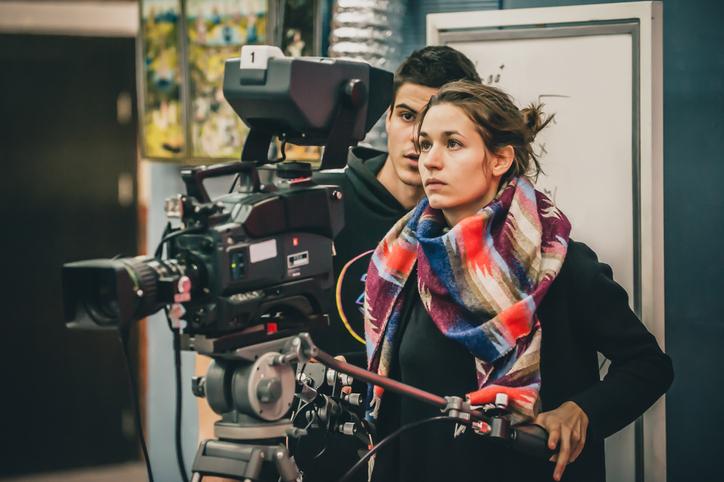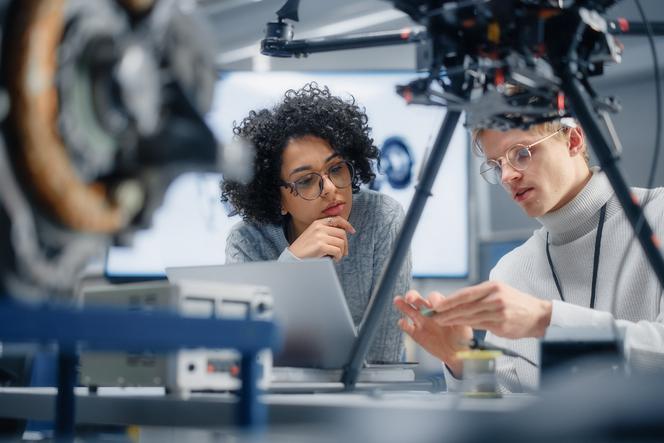With the rise of streaming giants, virtual production, artificial intelligence and immersive technologies, the global media landscape is shifting at a pace that often leaves even seasoned professionals scrambling to adapt. For those of us tasked with educating the next generation of filmmakers, animators and digital storytellers, the questions are urgent: how do you teach in such a fast-moving industry? Is it even possible to prepare students for jobs that may not yet exist?
As my institution celebrates 50 years of teaching media studies, these questions aren’t theoretical. Instead, they are the reality shaping our curriculum, our partnerships and our vision for the future.
- Why range may be a crucial skill for the employees of the future
- How to work with industry in mutually beneficial ways
- Building blocks of university-industry partnerships for positive change
Over the past decade there have been seismic shifts in how stories are made and consumed. Virtual production, once the preserve of blockbuster budgets, is now accessible to independent creators. Artificial intelligence is reshaping everything from scriptwriting to post-production, while platforms such as TikTok and YouTube have democratised content creation and distribution. Traditional workflows, where roles and processes were clearly defined, have given way to dynamic, digital and decentralised models.
Today’s graduates might find themselves working on a Netflix series one month, a virtual reality game the next, and an interactive installation after that. The boundaries between film, television, games and digital media are blurring, and the skills required are evolving just as quickly.
Teaching the future
Our response is rooted in a blend of academic rigour and practical experience. We believe that learning by doing is essential in an industry defined by innovation. Students in our film, television, games, animation and digital media courses are not passive recipients of knowledge – they are active participants in real-world projects, often collaborating across disciplines and with industry partners.
For example, our virtual production modules allow students to experiment with real-time rendering and LED wall technology, mirroring the workflows used in major productions sich as the Disney+ TV series The Mandalorian.
In animation and games, students work with industry-standard software and pipelines, gaining experience that is directly transferable to professional environments. Our emphasis on teamwork, problem-solving and creative risk-taking ensures that graduates are not just technically proficient but adaptable and resilient.
Bridging the skills gap
The skills shortage in areas such as virtual production, real-time animation and digital media is well documented. Employers are seeking graduates who can hit the ground running yet also possess the agility to learn new tools and techniques as they emerge. We address this gap by fostering a culture of continuous learning and adaptability.
We encourage students to see themselves not just as specialists but as creative technologists, comfortable moving between roles, platforms and genres. This is supported by a curriculum that is regularly updated in consultation with industry partners, ensuring that our teaching reflects current and anticipated trends. Guest lectures, industry placements and live briefs all play a role in bridging the gap between the classroom and the workplace.
Staying ahead
The challenge for educators is not just to keep up with change but to anticipate it. This requires willingness to experiment, to embrace uncertainty and to foster a spirit of lifelong learning. As outlined, we’re investing in new facilities, forging partnerships with leading industry players and supporting staff to stay at the cutting edge of their fields.
We also recognise that the most important skills we can teach are not always technical. Creativity, collaboration, communication and critical thinking are the attributes that will enable our graduates to thrive, whatever the future holds. By encouraging students to be curious, take risks and learn from failure, we are preparing them for careers that could look very different from those of today’s professionals.
It is tempting, in such a fast-moving environment, to focus solely on technical skills. But media education is about much more than mastering the latest software or camera rig. At its heart, it is about nurturing storytellers who understand the cultural, social and ethical contexts of their work.
Our courses emphasise the “why” as much as the “how”. Students engage with media theory, history and criticism, to develop the critical thinking skills needed to navigate an industry that can have huge effects on society. We challenge students to consider the impact of their work, to question assumptions and to contribute to a more inclusive and representative media landscape.
Why it matters
The media and creative industries are among the UK’s most dynamic and important sectors, contributing billions to the economy and shaping our cultural identity. The demand for skilled, adaptable professionals has never been greater. We’re committed to preparing students not just for the jobs of today but for the opportunities and challenges of tomorrow.
By combining rigorous academic study with hands-on experience, by working in partnership with industry and by fostering a culture of creativity and resilience, we believe it is not only possible to teach in a fast-moving industry, but also essential. Our students are not just learning to keep up – they are learning to lead.
Doug Specht is a chartered geographer, reader in cultural geography and communication and head of the School of Media and Communication at the University of Westminster.
If you would like advice and insight from academics and university staff delivered direct to your inbox each week, sign up for the Campus newsletter.




comment